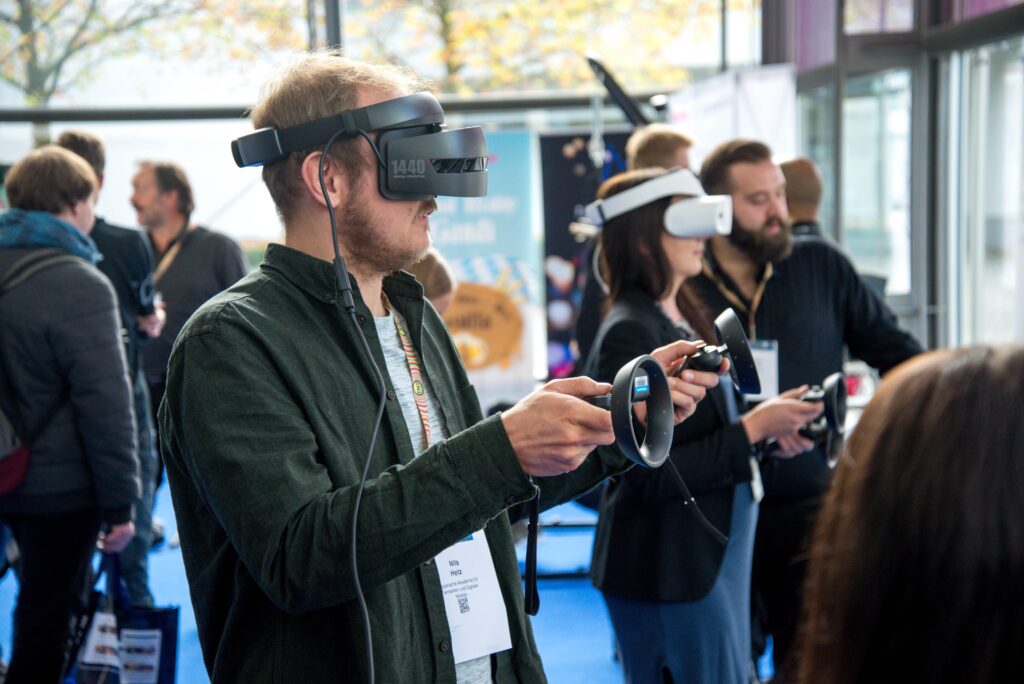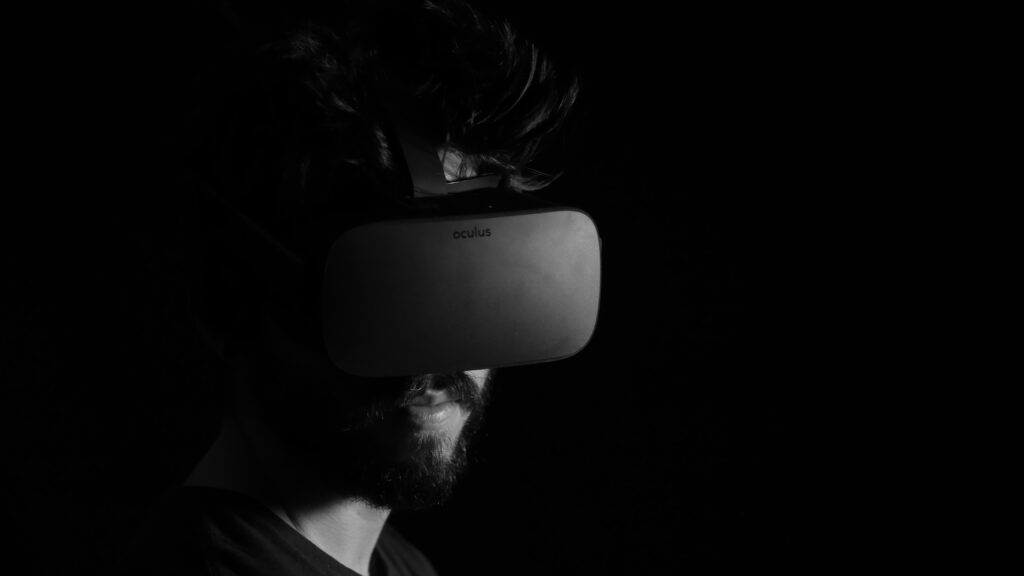Mixed Reality (MR) is transforming the landscape of both work and play, offering unique and immersive experiences that blend the digital and physical worlds. This groundbreaking technology has the potential to revolutionize how we interact with our environment. In this blog, we will explore what Mixed Reality is, its key features, and how it is reshaping the way we work and play.
What is Mixed Reality?

Mixed Reality (MR) is a technology that combines elements of both Augmented Reality (AR) and Virtual Reality (VR). It seamlessly blends the real world with computer-generated elements, creating a spectrum where physical and digital coexist and interact in real time. MR environments are dynamic, responsive, and immersive, making it possible to engage with digital content while still being aware of the physical surroundings.
Key Features of Mixed Reality

One key feature that sets MR apart is its ability to anchor virtual objects in the real world, making them appear as if they exist in our physical environment. This anchoring is precise, enabling virtual objects to interact convincingly with real-world objects and surfaces. This feature opens up endless possibilities for MR applications.
Mixed Reality (MR) stands out due to its unique key features. One of the most defining aspects is its precise anchoring of virtual objects in the real world. This capability allows digital content to interact convincingly with physical objects and surfaces, creating seamless integration.
Another essential feature is the dynamic, responsive nature of MR environments, where virtual and real elements coexist in real-time, adapting to users’ interactions. MR also offers spatial mapping, enabling the device to understand and map the physical surroundings accurately. This feature ensures that virtual objects align and react realistically within the user’s environment, making MR experiences incredibly immersive and interactive.
How MR is Changing the Way We Work

In the workplace, MR is having a profound impact. It is used in:
- Training and Simulation: MR provides hands-on, realistic training experiences. From medical simulations to manufacturing, employees can practice and hone their skills in a risk-free virtual environment.
- Remote Collaboration: MR enables remote teams to work together in shared virtual spaces, enhancing collaboration and communication across distances.
- Design and Visualization: Architects and engineers can use MR to visualize and interact with 3D models, making design processes more intuitive and efficient.
How MR is Changing the Way We Play

Mixed Reality (MR) is reshaping entertainment by adding a layer of interactivity and immersion to play. It introduces captivating gaming experiences where players engage with virtual objects in their real surroundings. MR transforms storytelling by seamlessly integrating digital characters and elements into the physical world, enhancing narratives and engagement. Moreover, MR fuels innovative educational toys and experiences, making learning an interactive and enjoyable adventure. It’s revolutionizing the way we play, offering new dimensions of engagement and entertainment.
In the realm of entertainment and gaming, MR is revolutionizing the way we play by:
- Enhancing Gaming Experiences: MR adds a new layer of interactivity and immersion to gaming, allowing players to engage with virtual objects in their physical surroundings.
- Creating Engaging Storytelling: MR enables storytelling where digital characters and elements are seamlessly integrated into the real world, making narratives more immersive and captivating.
- Interactive Toys and Education: MR opens up innovative avenues for educational toys and experiences, making learning engaging and fun.
Conclusion
Mixed Reality is ushering in a new era, where work and play are more immersive, interactive, and engaging than ever before. Its unique ability to blend the real and digital worlds is being harnessed in various industries, from training and design to gaming and entertainment. As MR technology continues to evolve, its impact on our daily lives is set to grow, offering endless possibilities for creative and practical applications that will reshape the way we work and play.
FAQs
1. How does Mixed Reality (MR) differ from Augmented Reality (AR) and Virtual Reality (VR)?
MR combines elements of both AR and VR. It overlays digital content on the real world like AR but also includes fully immersive virtual environments like VR. This blending allows for more interactive and dynamic experiences.
2. What are some specific examples of MR applications in the workplace?
MR is used in various workplace scenarios, such as training simulations for medical professionals, collaborative design sessions for architects and engineers, and remote team collaboration in shared virtual spaces.
3. How is MR enhancing gaming experiences, and can I use MR for gaming at home?
MR offers gamers the opportunity to interact with virtual objects in their real-world surroundings, creating more immersive gameplay. There are consumer MR headsets available for gaming, such as the Microsoft HoloLens and Magic Leap One, though they are not as common as traditional gaming consoles.
4. Are there any limitations or challenges in implementing MR in the workplace or for entertainment?
Implementing MR can be resource-intensive in terms of hardware and development costs. Additionally, there may be challenges related to user adoption, privacy concerns, and the need for specialized skills to create MR content.
5. What is the future of MR, and how do you see it evolving in the coming years?
The future of MR is promising, with continued advancements in hardware, software, and content creation. It is likely to become more accessible, affordable, and integrated into various aspects of our lives, from work and education to entertainment and everyday activities.

